
The poisonwood tree, Metopium brownei, is known in the Mayan language as che-chem, with the accent on chem. It is in the same family as poison oak, poison ivy, poison sumac and the cashew plant, so you know it’s serious.
You need to know about poisonwood because it is coming for you. Seriously, poisonwood can give you a serious itch, a miserable rash, and even running sores that can last up to three weeks. A web search to find out what to watch out for is less than useful, with little visual information for identifying the leaves.
So let’s take a closer look at what it is, how it appears, what to do and NOT to do, and how to treat it if it zaps you.

There are two types of poisonwood found all around Better in Belize – black che-chem and white che-chem. Both can be seen along the road above the Garden Shed at the milpa. I’ve marked the black che-chem with orange flagging tape and the white che-chem with pink flagging tape, which should last for a year or two. We should keep these marked for reference.
The leaf resembles poison oak, but is tougher and may have a wavy edge (or it might not). I made a video of it here so you can check it out and take a good look, but then you should go see it in person if possible. The leaf pattern is called “alternate, pinnately compound,” which describes multiple leaves along a long stem.
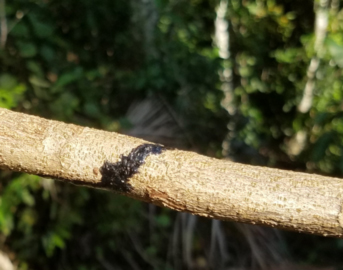
The white sap from broken or scratched leaves, stems, and branches turns black when exposed to air for awhile, so the trunk and branches often have black blotches on them, a good identifier. But you may only be exposed to seedlings or sprouts if you are walking through them or weeding them from your garden, so you need to be able to identify those, too – the young leaves are reddish, much like the young leaves of poison oak and ivy.
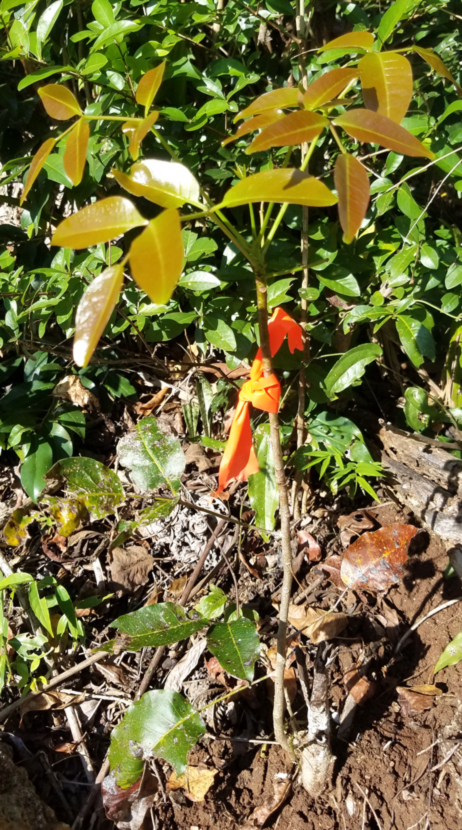
The guilty culprit is the sap which gets on your skin or in your eyes. Cutting down a poisonwood tree can get sawdust in your eyes – bad news! The first treatment is to ditch the clothes you were wearing. Toss them aside and put them into the washer using tongs or gloves. Wash them separately to remove any sap.
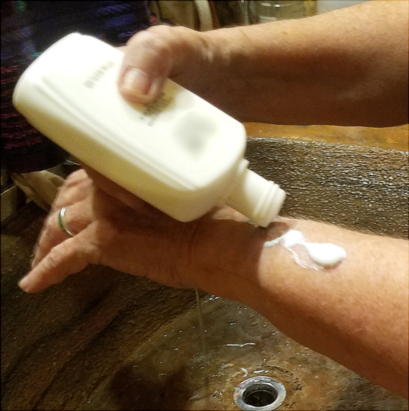
After tossing the clothes, wash any exposed skin areas with a lot of lukewarm soap and water or with rubbing alcohol. If you do this within a few minutes of contact with the poisonwood, it will help you avoid the consequences, or at least make them less severe. After scrubbing and drying I always apply lotion to fill any scratches or cracks in my skin. This is my particular treatment – because I’ve found that if skin is dry or cracked, the rash will be worse.
There is a soap made specifically for washing after encountering poison oak, sumac and ivy. It should work with poisonwood, too. It’s called Tecnu, and I have used it successfully to prevent poison oak rashes.
If you develop a rash, there is one effective treatment nearby in tropical forests which can help. The juice from the inner bark of the gumbo limbo tree is active against the poisonwood sap, and you can boil some of the bark to make a tea to apply to the rash and sores. Calamine lotion, apple cider vinegar (not white vinegar), a paste of baking soda and water, and cold compresses also help. Whatever you do, don’t scratch hard enough to break the skin or rip blisters open. You can get a really serious bacterial infection which could require medical treatment. If the itching is driving you nuts, get a baby’s hairbrush and stroke it softly. This will satisfy the itch without breaking the skin.

Ann McGregor, whose husband had a serious encounter with poisonwood, says you can also take advantage of a characteristic of histamines (what makes you feel itchy). “Your cells take several hours to regenerate histamine, but heat releases it. So if you can stand it, heat up the area (we used rice or salt in a sock, like a heating pad) and sit with the heat on it until the itching subsides. You can also do a fairly hot shower. You have to suffer through 5-10 minutes of itchy agony, but then you get several hours of relief.”
If you spend time out in subtropical forests, learn what poisonwood looks like, and avoid grabbing ANY foliage and branches as you hike or sit to rest. Be particularly careful around broken or cut twigs or branches, which might be exuding sap. When gardening, either be VERY cautious, or wear gloves and use tools which you reserve just for gardening, being careful to not touch the gloves’ outside surfaces or the tools where the sap can linger.
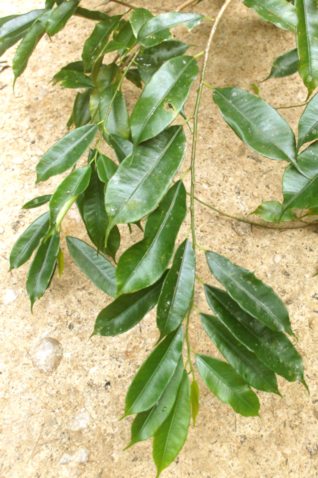
Here is what white poisonwood looks like. Obviously, with its long, pointy leaves it doesn’t look anything like the black poisonwood. However, its effects on your body are similar to those of the black poisonwood, although generally not quite as bad.
If you are fortunate enough to go hiking with a naturalist or a Belizean who lives in the bush, ask them to educate you about how to differentiate poisonwood from other plants and trees. City dwellers, Belizean or not, may not know any more about poisonwood than you do.
You may encounter poisonwood without even knowing about it. Some people can get a poisonwood rash from patting a dog which has been crashing around in the shrubbery. For a rash that gets worse, you might want to see a doctor to identify it for sure and get treatment. But try the gumbo limbo. It’s free and Belizeans have been using this treatment forever.
To prepare ahead for an encounter with poisonwood, you can make a very effective gumbo limbo tincture to apply (after scrubbing with soap, rinsing and drying) to any areas that were in contact with the sap or which show a rash later on. The gumbo limbo tincture is also effective against other skin ailments.
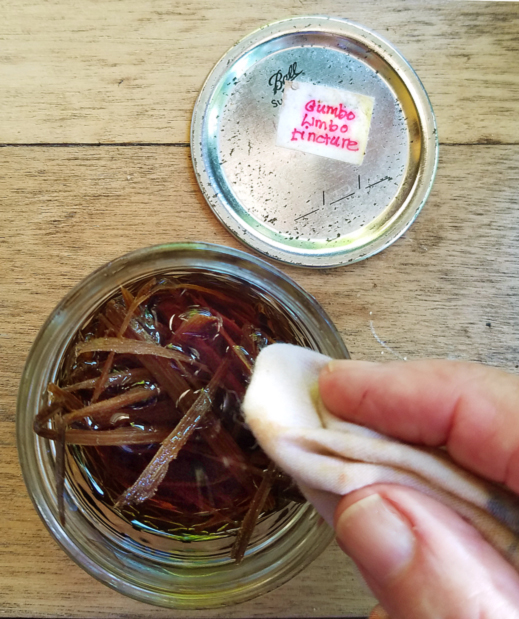

To make your own tincture, sliver a 5”x1” strip of gumbo limbo bark (about half an inch thick, including inner and outer bark and the papery red flakes, into a half-pint jar or bottle. Press the slivers down firmly and add rum to fill the container. Put on a leak-proof lid and set it in a darkish spot for a month, upending it once a day. At the end of that time, you’ll have a good tincture. Leave the bark in the container if you wish, and use the liquid as needed. When it is half gone, you can top off the container again with rum for a slightly diluted tincture. More about this and other medicinal uses of Gumbo Limbo is here.
Dave and Carissa, BIB residents, encountered poisonwood while gardening recently and have been generous enough to share their experience and photos here. First Carissa:
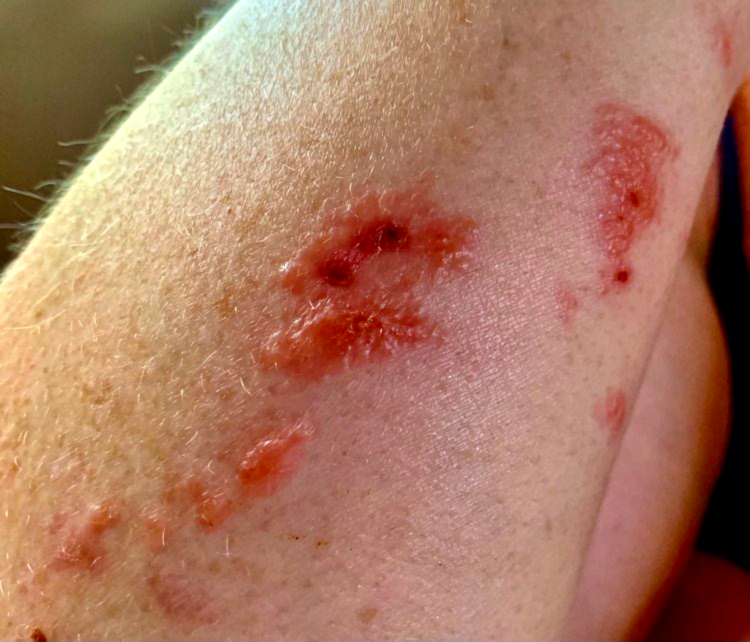
We cleared the vines and leaves Thursday late afternoon. I started getting some small rashes Friday evening on my face. By Saturday morning my whole face including lips had small blisters and my right forearm and left shoulder had large clustered blisters. It has been itchy the entire time but has increased exponentially as the days have gone by. Saturday and part of Sunday were tolerable. Sunday night and forward…pain, itchiness, discomfort and it spread to my stomach, side, left forearm and small blisters in a bunch of areas (finger, wrist, elbow, ass cheek).
Yesterday was the worst so far. It has also come with headache, fever and body aches starting Sunday night. That has not gone away. The headache has gotten worse.
My right forearm with the clustered large blisters started to leak and with my tossing and turning sleepless nights, I think that’s when it spread to random areas. After that happened Sunday night, on Monday I soaked gauze pads with gumbo limbo and wrapped my whole arm to prevent it.
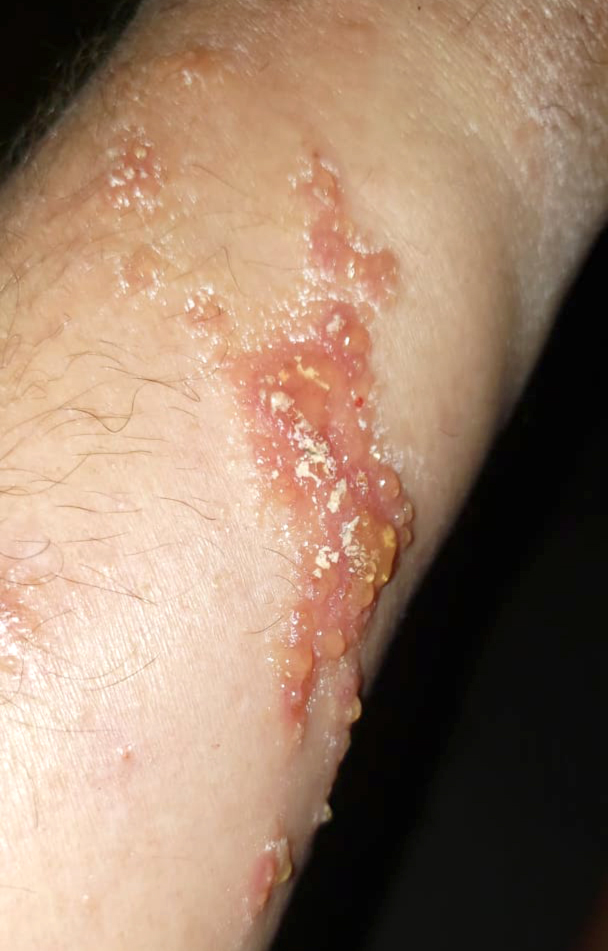
Dave says:
My story is pretty much the same except I don’t have as much skin effected as Carissa. I did get some exposure on an eyelid. There was some puffiness Saturday and Sunday.
Monday my eye was swollen shut but gradually got better throughout the day and was almost swollen shut this morning [Tuesday]. The itching is the worst. I want to take a wire brush to all the blisters for relief. [see above for scratching advice].
There is a lot of poisonwood, both white and black around Better in Belize. If you want to see some up close and personal without the awful consequences of “finding” it yourself, walk along the road above the Garden Share shed. This photo shows an orange-flagged black che-chem (follow the red arrow) about fifty feet from where the tractor parks. To see a white che-chem, walk down the road toward the center of the photo, and you will find one on the right, marked with pink flagging tape. Take a good look. It might save you days and weeks of itching later!
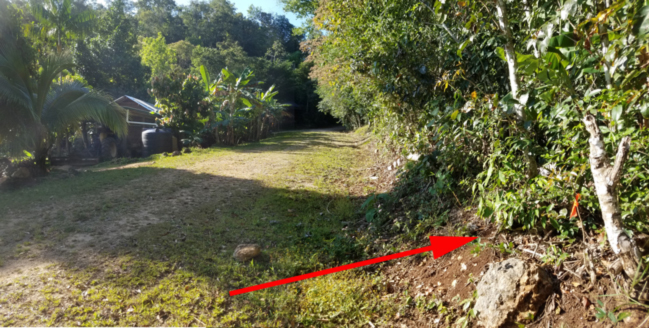
NOTE: An update on Dave and Carissa: one full week after they encountered the poisonwood, and with liberal use of boiled gumbo limbo bark compresses, gumbo limbo tincture, and calamine lotion, Carissa reports the following: “We went down to the river around 5:30 last night and soaked in the super chilly pools at Rio Frio. It helped a lot!!!!!! Started to feel a bit better yesterday [Wednesday] afternoon before we went down though. Headache, fever and body aches are gone. Face is healing well. My arms, side and stomach are itchy, still but definitely better.